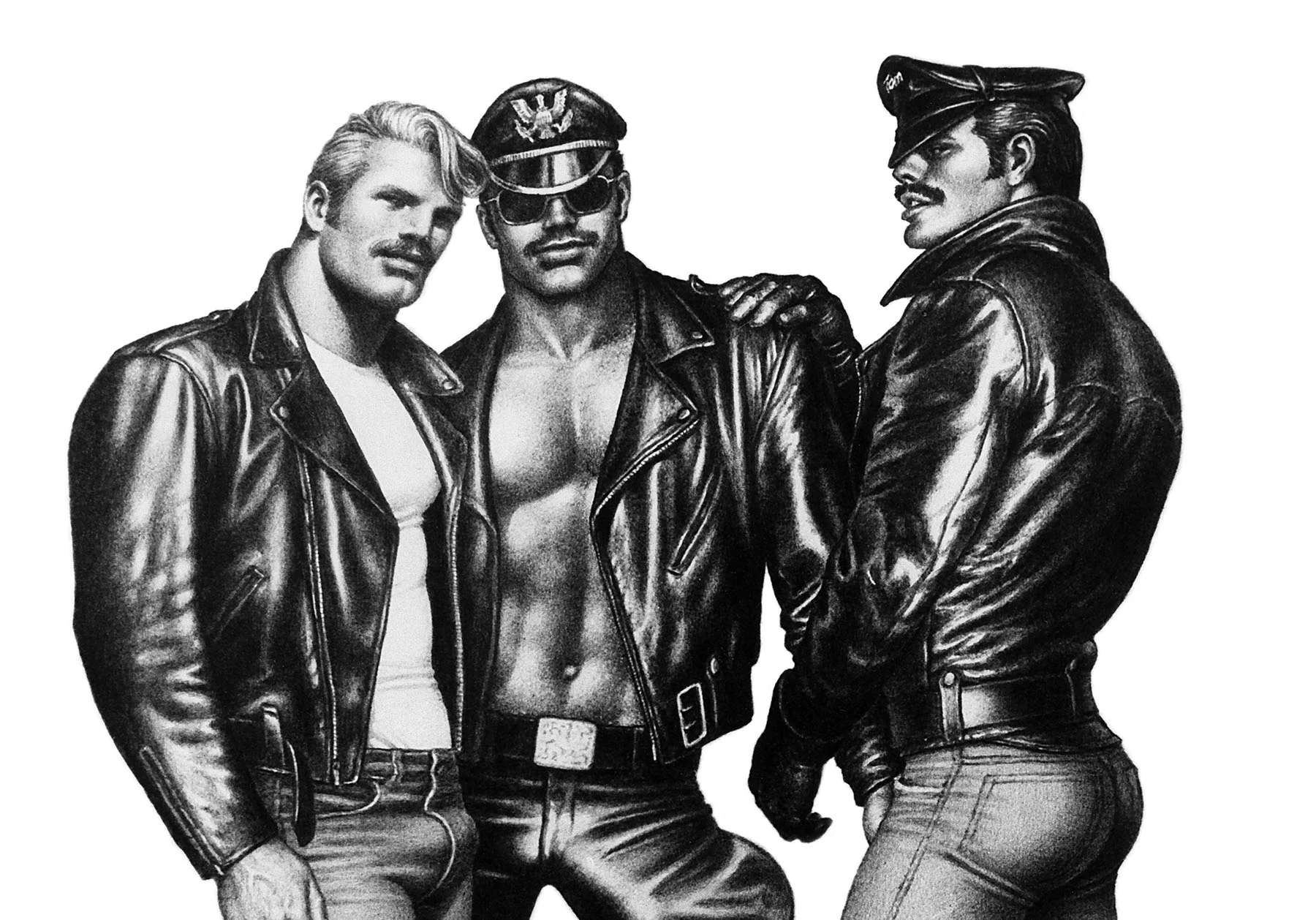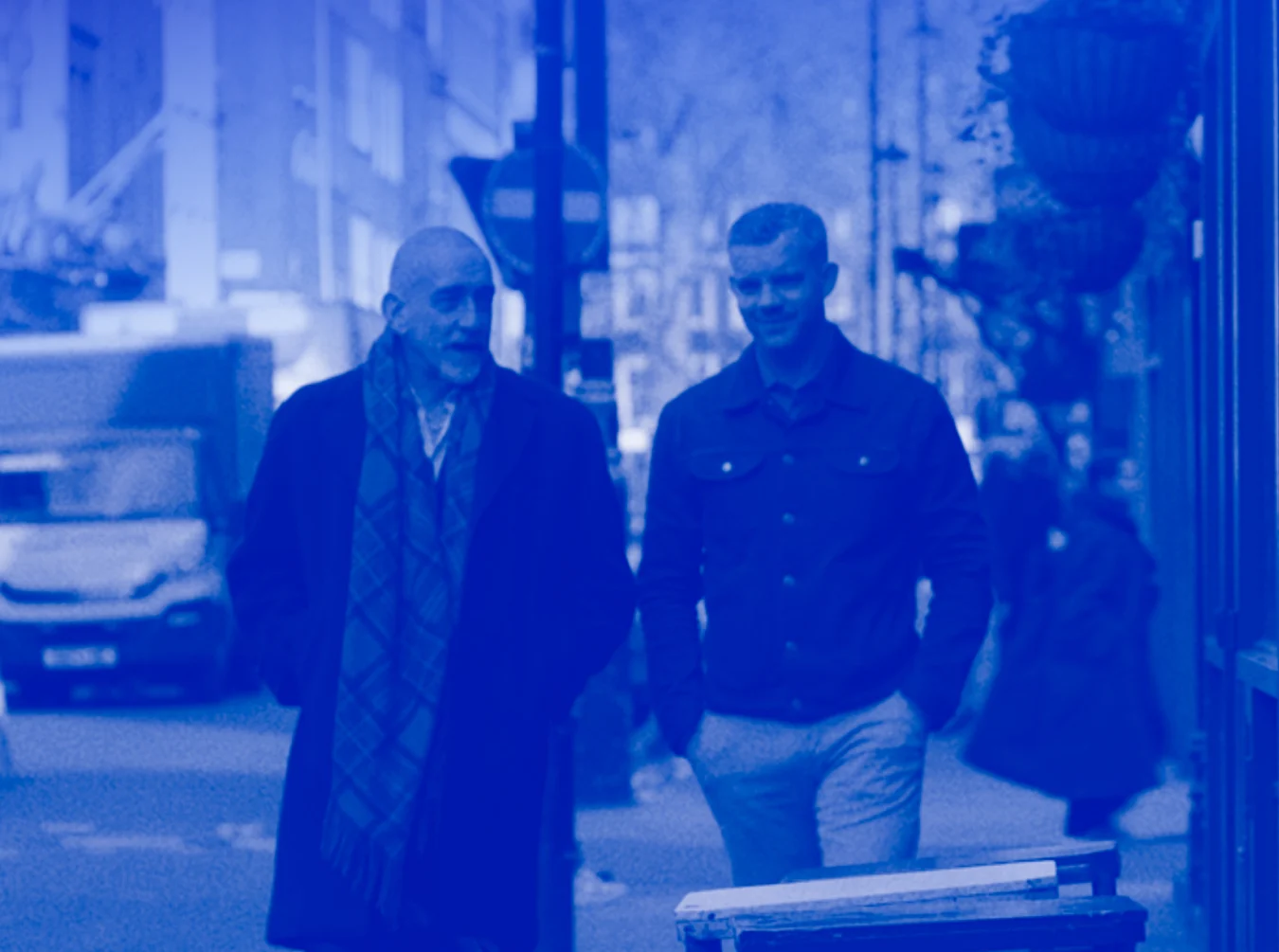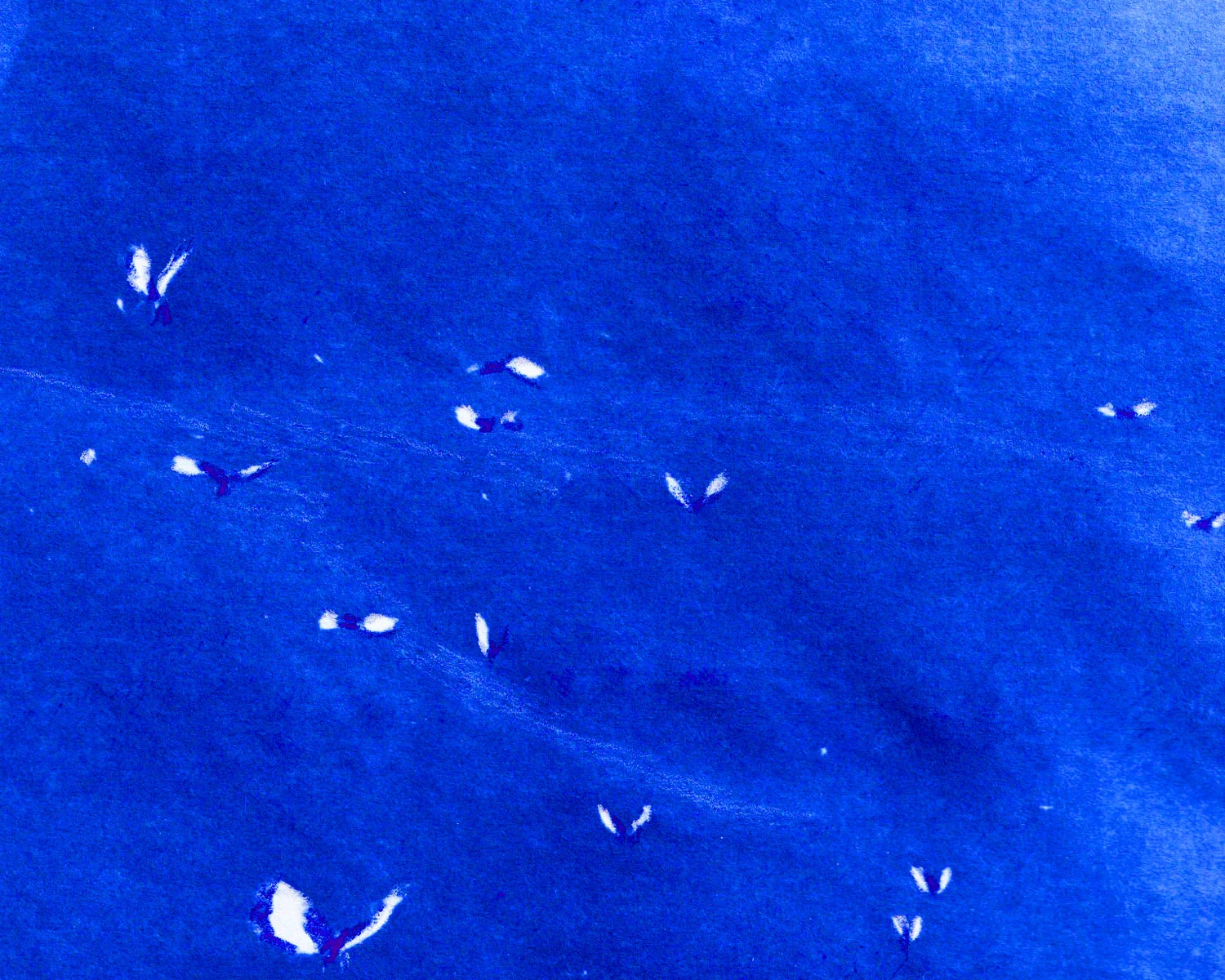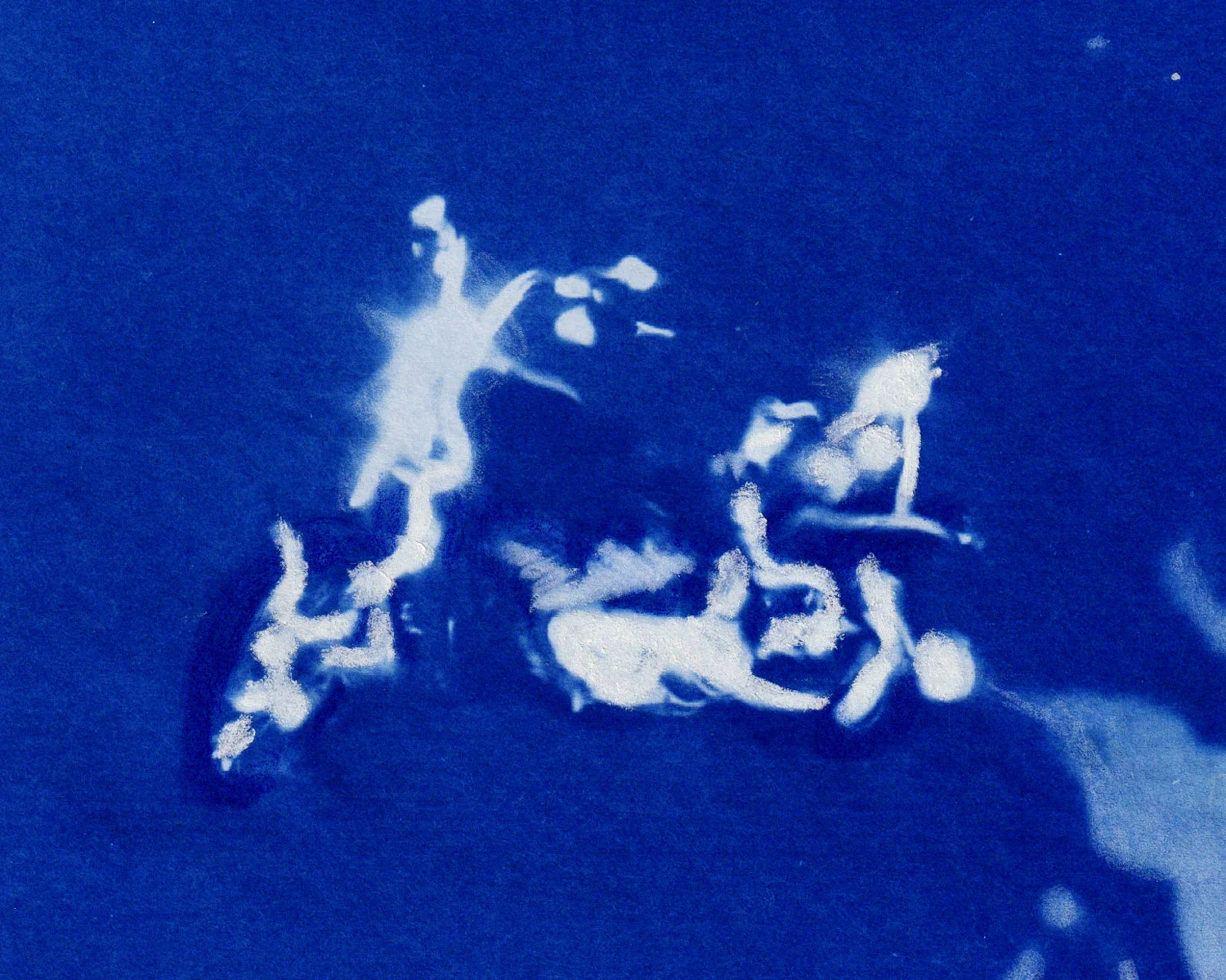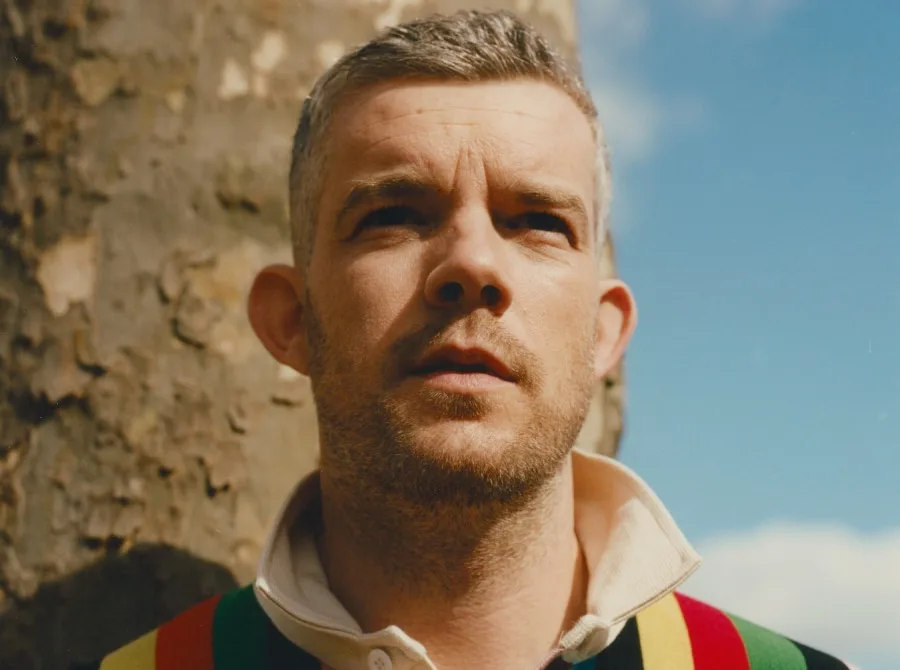

For as long as they can remember, Karachi-born, Connecticut-based artist Fiza Khatri’s paintings have been inspired by observing life; a practice that’s helped them understand their own place in the world. Their oil paintings are tender recreations of their day-to-day interactions—to which they add layers of imagination and fantasy to create a sort of auto fiction—capturing the intimate relationships they, and we, have with the people and the places around us. In this podcast episode, TalkArt hosts Russell Tovey and Robert Diament speak to Fiza about light, color, self-portraits, and the intimate connection that can be born from painting another person.
Fiza Khatri is one of three artists selected by Russell Tovey as part of his WePresent Guest Curatorship. You can read his mission statement in his Guest Editor’s Letter.
On observation
I really felt committed to this practice of looking really closely at my environment and finding things that can be a point of storytelling.
“When I was an undergrad, I was obsessed with working from observation,” says Khatri. “That’s all I wanted to do. I really felt committed to this practice of looking really closely at my environment and finding things—like the light conditions, surface textures, the detritus of a lived experience—how they can be a point of storytelling.” After their degree, this observational approach expanded to include people in the social groups they were moving in, the relationships that were being formed. “The spaces we were building together,” they specify.
Ever since, their artworks have been centered around this practice of paying close attention to their environment, and they believe that you can find more than meets the eye in the everyday. “So I think to me it is about the personal,” they say, “but then it also speaks to these larger forces or relationships, and I think I kind of go back and forth between them constantly.”
On the intimacy found in painting someone
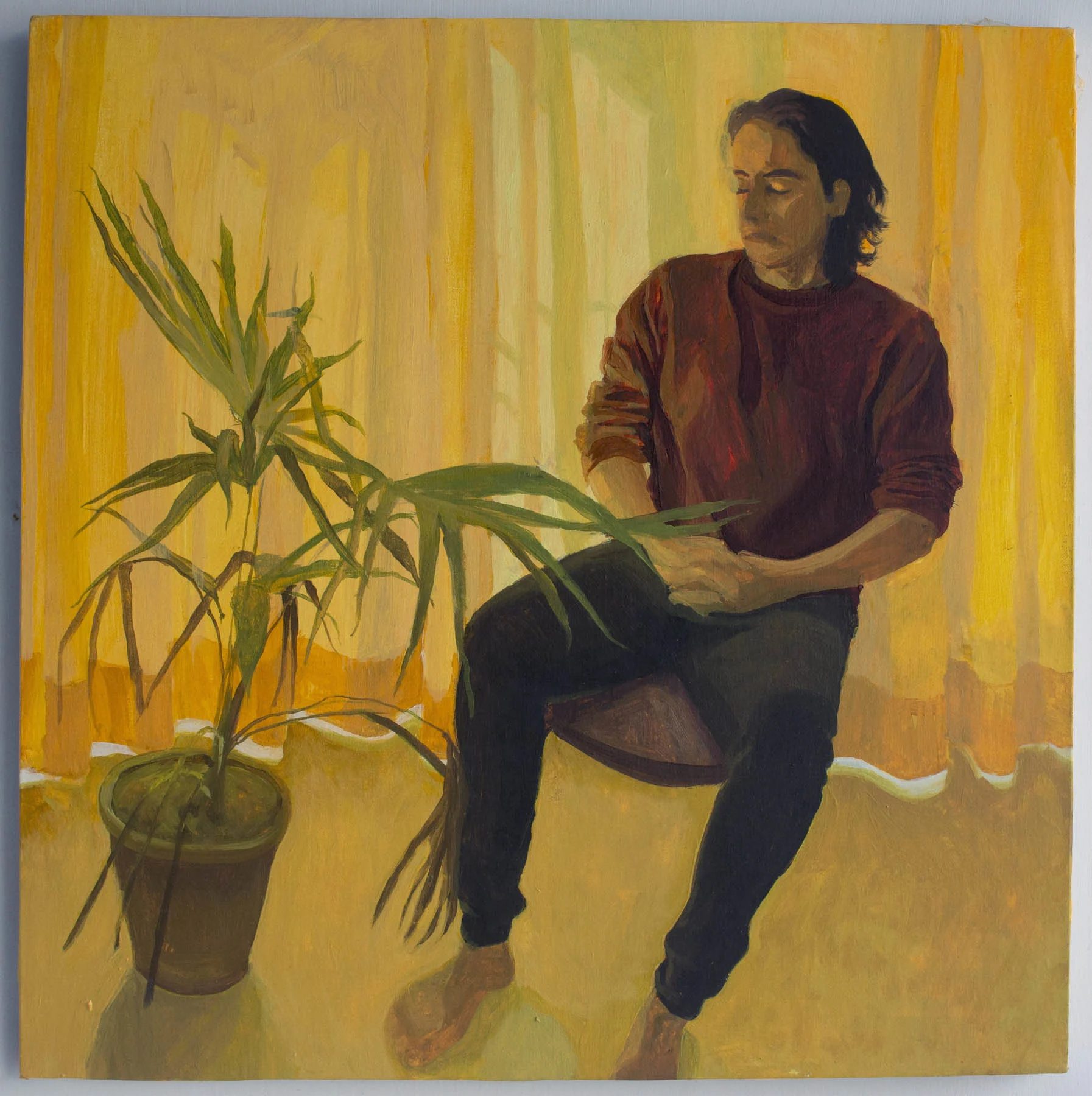

On light and color
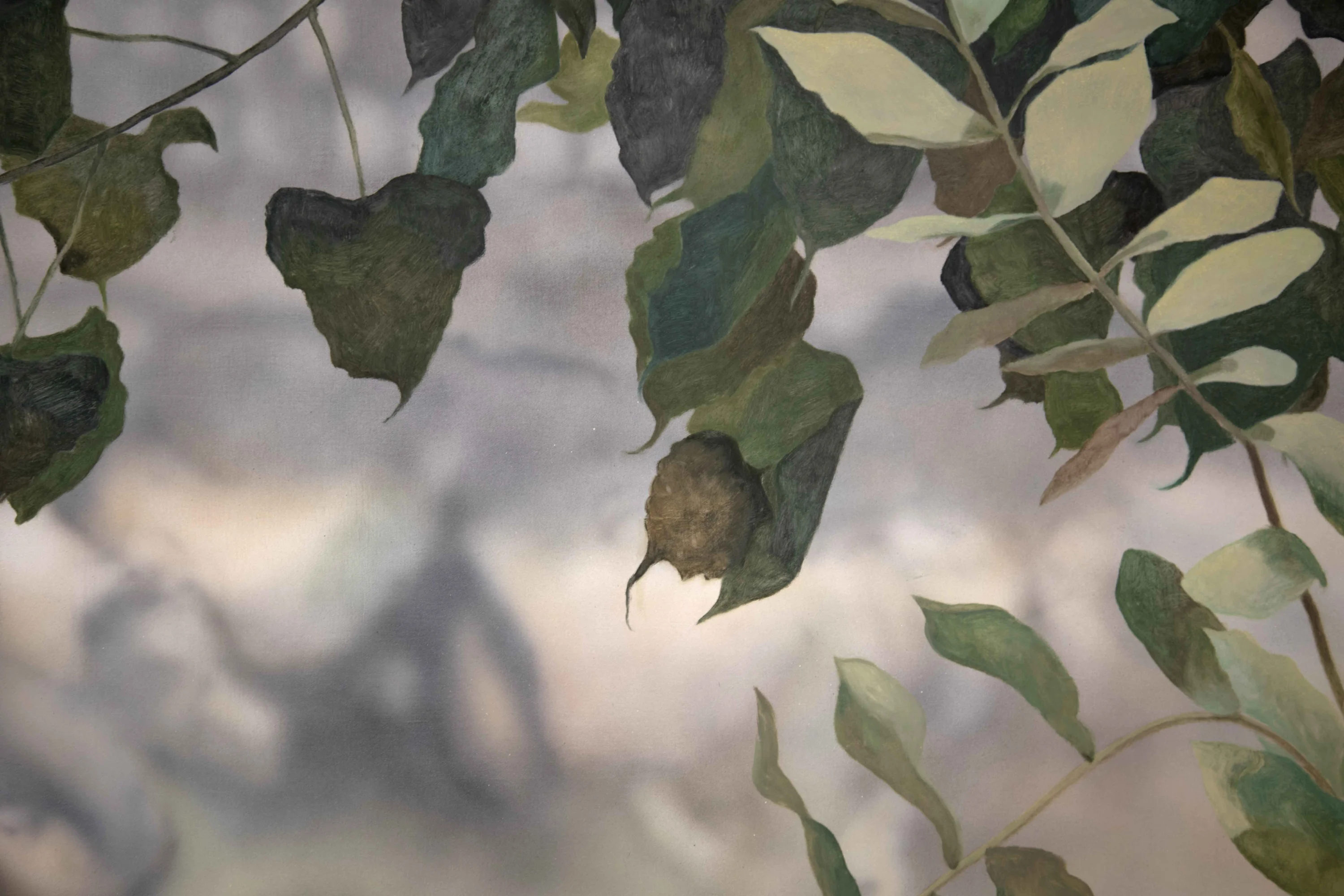
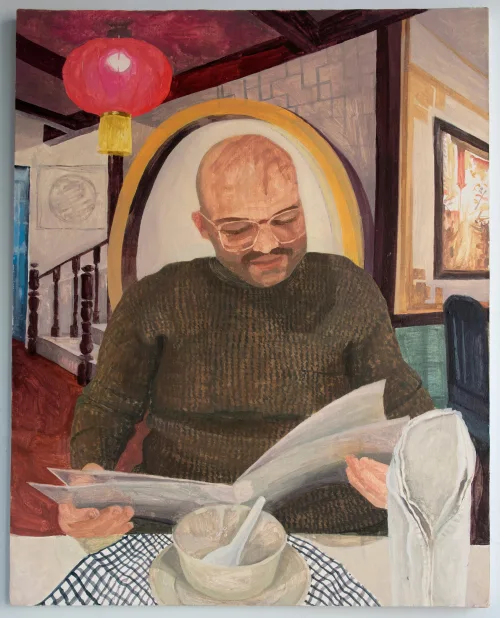
On self-portraits

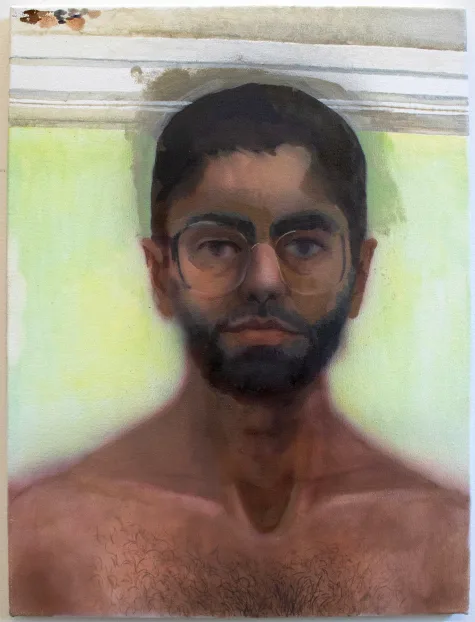
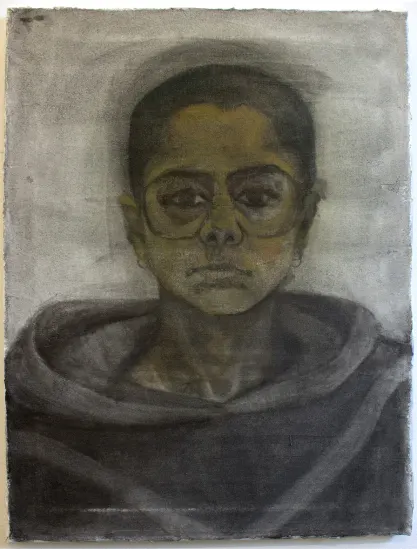
How do you determine where the self ends, the self’s relationship to other bodies or the people that you come into contact with or the environments that you are a part of?
Khatri created a series of “self-portraits” that don’t actually mirror their physical appearance; they paint themselves with facial hair, or as an otter. This series is a perfect example of the ways their work blurs the lines between fiction and reality—they explore their own identity, and ideas of representation, by imagining themselves as someone else. “Prior to this series I had been making portraits of a lot of my friends,” they say. “When I came to Yale I kind of really started thinking about the politics of representation, what it would mean to continue depicting those people from that context in this new context that I found myself in with the new audience, with the new gaze.
Khatri felt paralyzed as they considered these questions, wanting to engage with the issues responsibly, with care: “In that moment I felt that the figure that I wanted to and was able to depict the most was myself. And to me, grad school is such a time of thinking about the self and what that entails and what that’s composed of and what the self kind of gravitated towards and how you represent yourself as well. And I remember making the first self portrait, which was self portrait as fuck boy, based on a drawing that I had made earlier and just being in my studio and cracking myself up. It felt like such a lighthearted, fun way of thinking about representation that was still guided to all of my interests around gender, around the representation of the self, where the boundaries of the self are. I think that was a real question in that series, how do you determine where the self ends, the self’s relationship to other bodies or the people that you come into contact with or the environments that you are a part of. I think it became about fantasy and play and being in disguise and not being fixed.”
On the role of hair
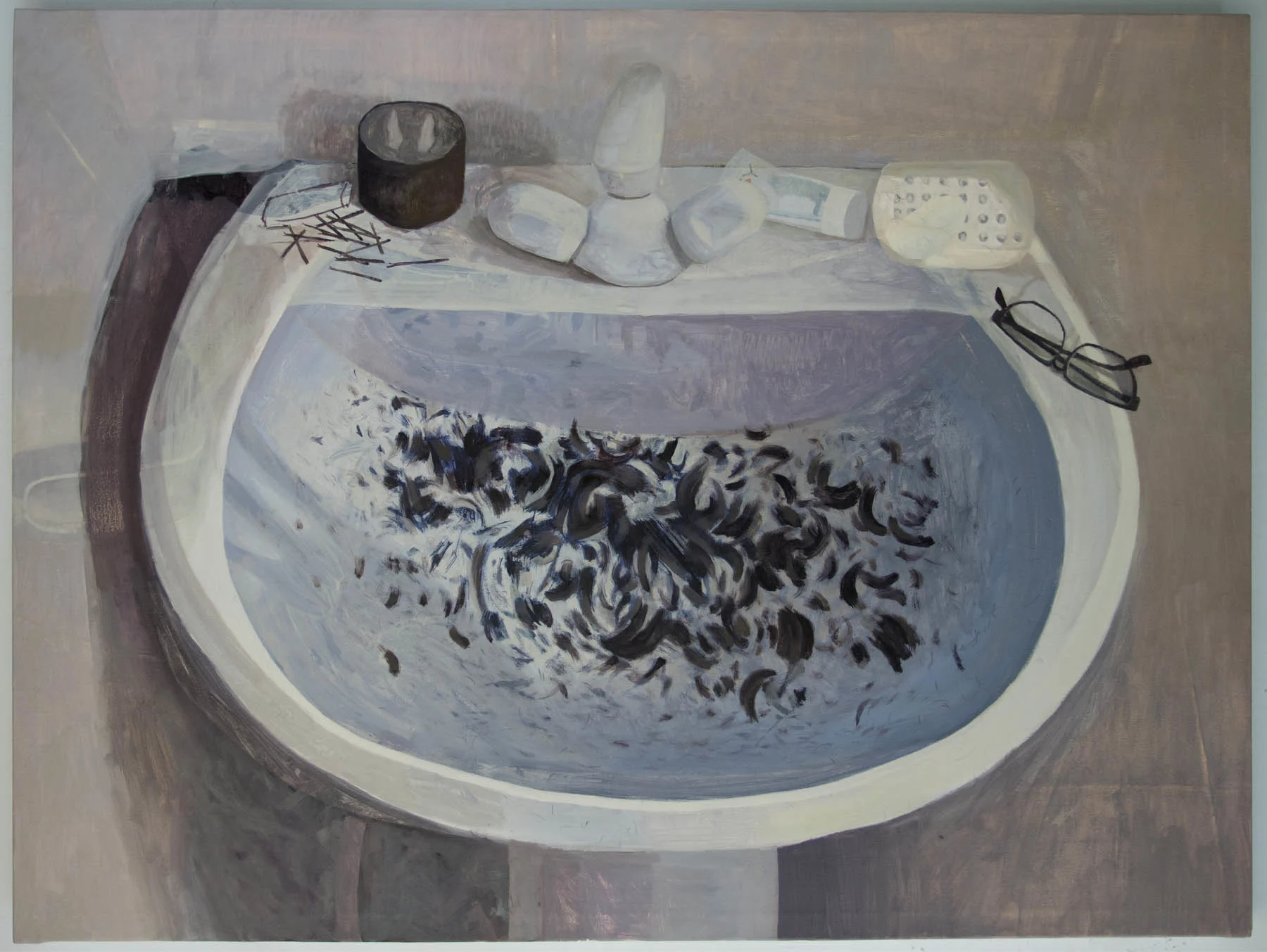
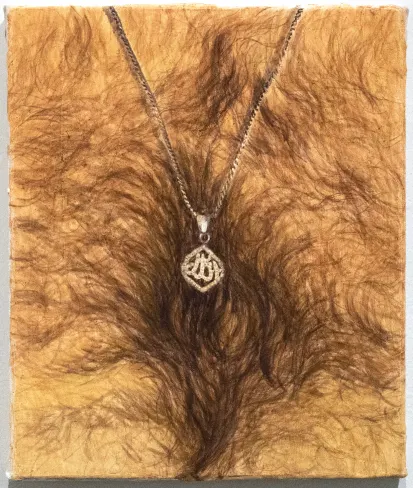
On what makes painting hard
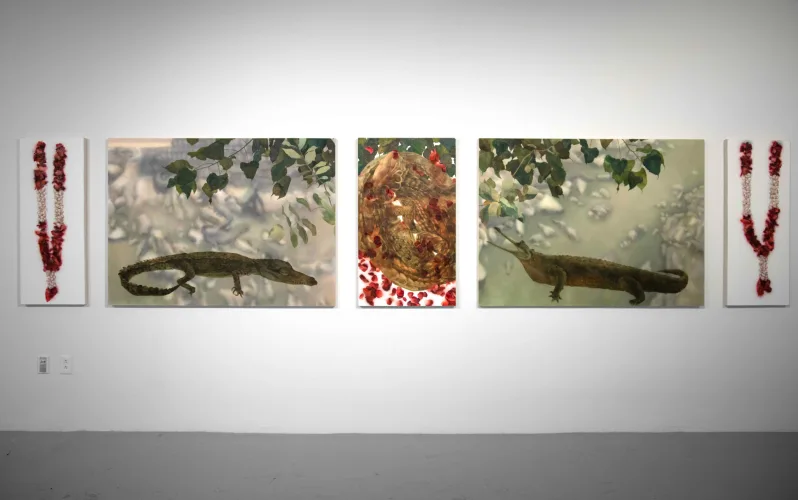
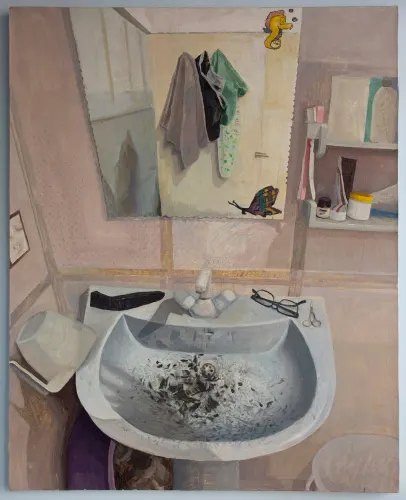
On painting non-humans






